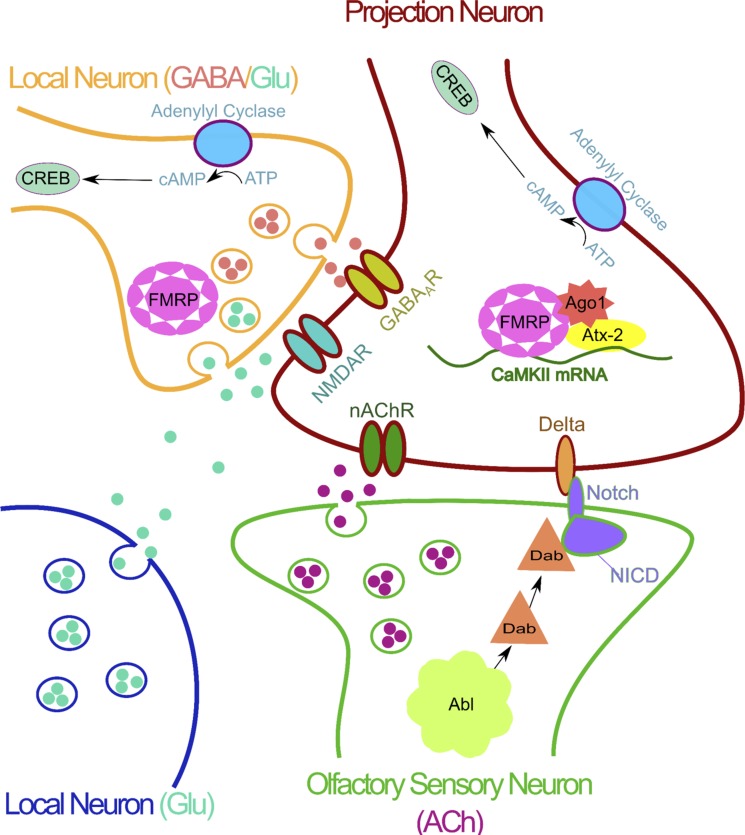Fig. 2.
The antennal lobe circuitry underlying long-term central adaption (LTCA) presentation. Olfactory sensory neuron (OSN): the OSN provides the odor signal to the antennal lobe via synaptic release of acetylcholine (ACh). LTCA volume changes are mediated by noncanonical Notch signaling with the Abl target Disabled (Dab) acting on the Notch receptor. Volume changes are controlled by a retrograde Delta signal activating a canonical Notch signaling pathway. Projection neuron (PN): the PN is the output of the antennal lobe. Changes in PN function require 3 different receptor classes: nicotinic acetylcholine receptors (nAChRs), N-methyl-d-aspartate receptors (NMDARs), and ionotropic γ-aminobutyric acid receptors (GABAARs). Functional presentation of LTCA requires Delta expression on the PN. RNA-binding proteins fragile X mental retardation protein (FMRP) and ataxin-2 (Atx-2) interact with the RNA-induced silencing complex (RISC) protein Argonaut1 (Ago1) to mediate translation of activity-dependent transcripts. One target transcript bound by both FMRP and Atx-2 encodes calcium/calmodulin-dependent kinase II (CaMKII). Local neurons (LNs): local neurons modify PN output via the release of GABA, glutamate (Glu), and other neuromodulators. A variety of LNs are important for LTCA presentation. The release of both GABA and Glu from LNs is required for LTCA. Two sites of Glu release are 1) synaptic corelease with GABA and 2) volume release from distinct glutamatergic neurons. FMRP and cAMP-response element binding protein (CREB) are both required in LNs for LTCA.

